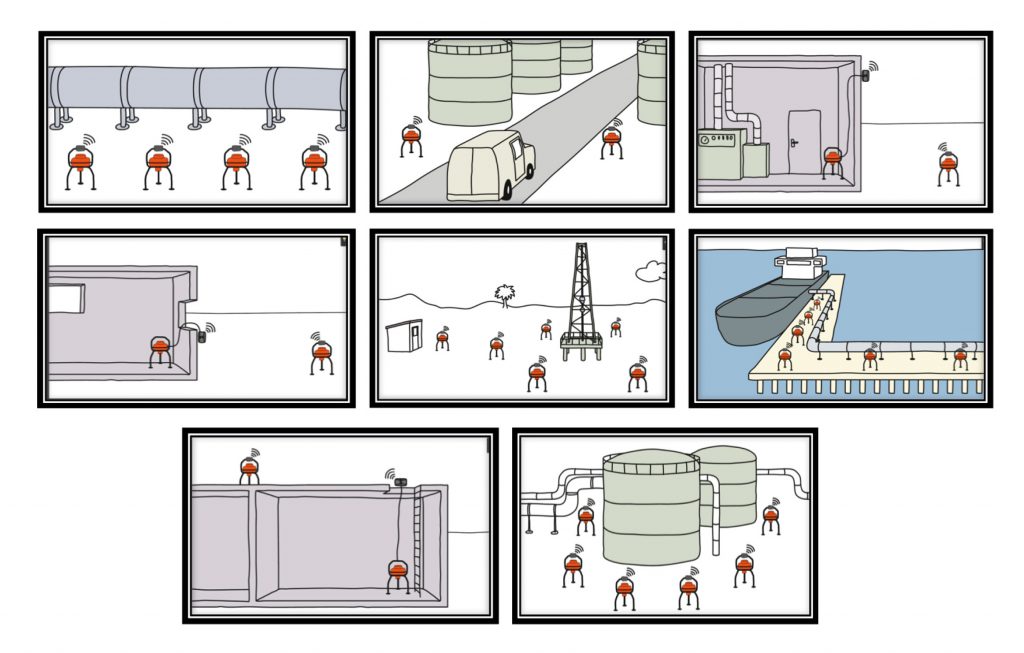Outdoor leaks from storage tanks or pipelines are a particular kind of hazard. Many outdoor areas won’t have permanent, fixed detection. If you rely on your personal monitor, by the time it alarms, you could be engulfed in a hazardous gas cloud. A temporary early warning system between you and the potential source of a gas hazard can alert you to trouble coming your way.
Networking
Temporary area monitoring is often provided by rugged units which can be stand-alone. They can also usually be networked. In this way, they can be used to form a line around a tank or along a section of pipeline near where work is being undertaken. The portable units can be easily deployed to provide fence line monitoring during maintenance, shutdowns or turnaround. The key is to make sure that the units are not so far apart that gas could pass between them undetected.

When gas is detected, all units in the fence line will go into alarm. However, it should be clear from the alarms which detector has “sensed” the hazard. The audible alarm and lights sequence are faster, to differentiate the unit nearest the gas from the rest and so alert everyone in the vicinity of the immediate hazard.
Wireless
Units can be connected by cables. However wireless connection between individual area monitors avoids introducing a potential trip hazard. This could add significantly to an already risky task, for example, if working at height.
Some wireless systems create a “self-healing” mesh network. In this case, should the wireless connection between two devices weaken, the network will automatically re-route
 communications via alternate enabled devices. In essence, this creates a mesh type network allowing a more robust and efficient wireless network.
communications via alternate enabled devices. In essence, this creates a mesh type network allowing a more robust and efficient wireless network.
Wireless connection makes it practical to use repeaters or extra units to relay alerts directly to the control room. In addition to gas alert signals, some detectors will transmit other faults e.g. loss of signal, or “battery low” alarm. This modulated alert mode is usually conveyed by a specific sequence of signals, for example the beacon and lights will flash for 3 seconds followed by a 5 seconds pause which will be repeated until a user acknowledges the alarm.
Wireless temporary area monitoring allows for quick deployment while maintaining a high level of protection for workers in situations where the risks are more difficult to monitor. Personnel working at height can be alerted to any gas hazards on the ground, or vice versa and the same alarm can be relayed to the control room by having an additional detector in the control room vicinity. Configuration tends to be straightforward without additional hardware. All in all, these units offer a simple yet effective solution for protecting workers outside of normal operations.

